FiiO BTR17 Portable Bluetooth DAC / Headphone AMP – Desktop Power And BT Flagship Sound
FiiO BTR17 is a $199 USD portable Bluetooth DAC, Headphone Amplifier that can be used as a desktop DAC/AMP, wired and wireless, and which has both a single ended and a balanced headphone output. With a flagship Dual DAC ES9096Q and a maximum driving power of 650mW x2 in desktop mode, BTR17 is the start of today’s review, and we will go in-depth, exploring how it compares to other similarly DAC/AMPs including Creative Sound Blaster G8 (149 USD), Shanling UP5 (179 USD), and FiiO BTR 15 (119 USD)
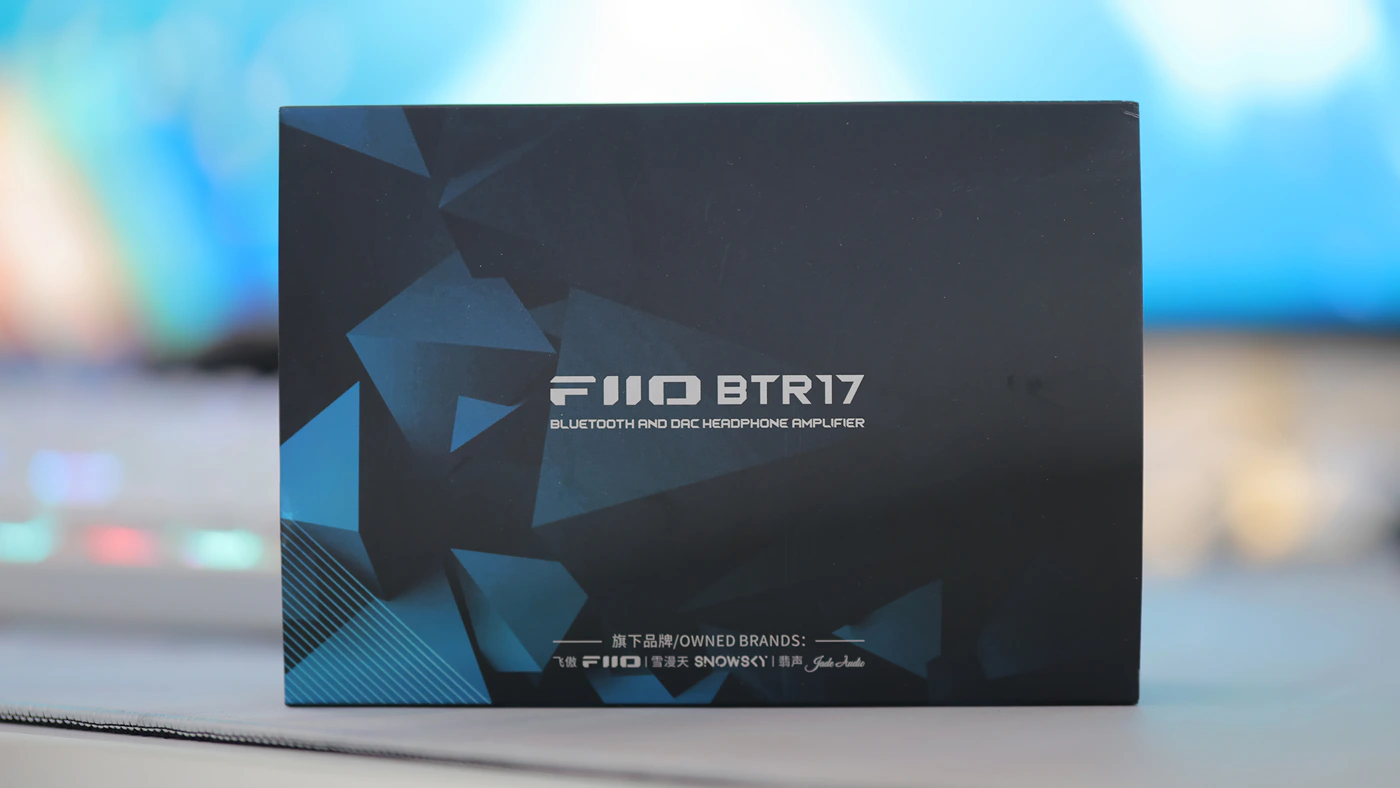
Introduction
FiiO BTR5 was the most popular DAC / AMP / Bluetooth receiver that was released a couple of years ago, and you could say that it was the original Bluetooth receiver to purchase back in the day. Today, there are many alternatives, so FiiO had to up their game, release better bluetooth receivers, and here we are, BTR17 is almost a desktop DAC AMP but still small and portable, so today we study how it fits the market. As an Amazon Influencer, I earn from qualifying purchases, and using the purchase links in my reviews helps me maintain this website and Youtube Channel. Huge Thanks to FiiO for providing the sample for this review, in exchange for my honest opinion.
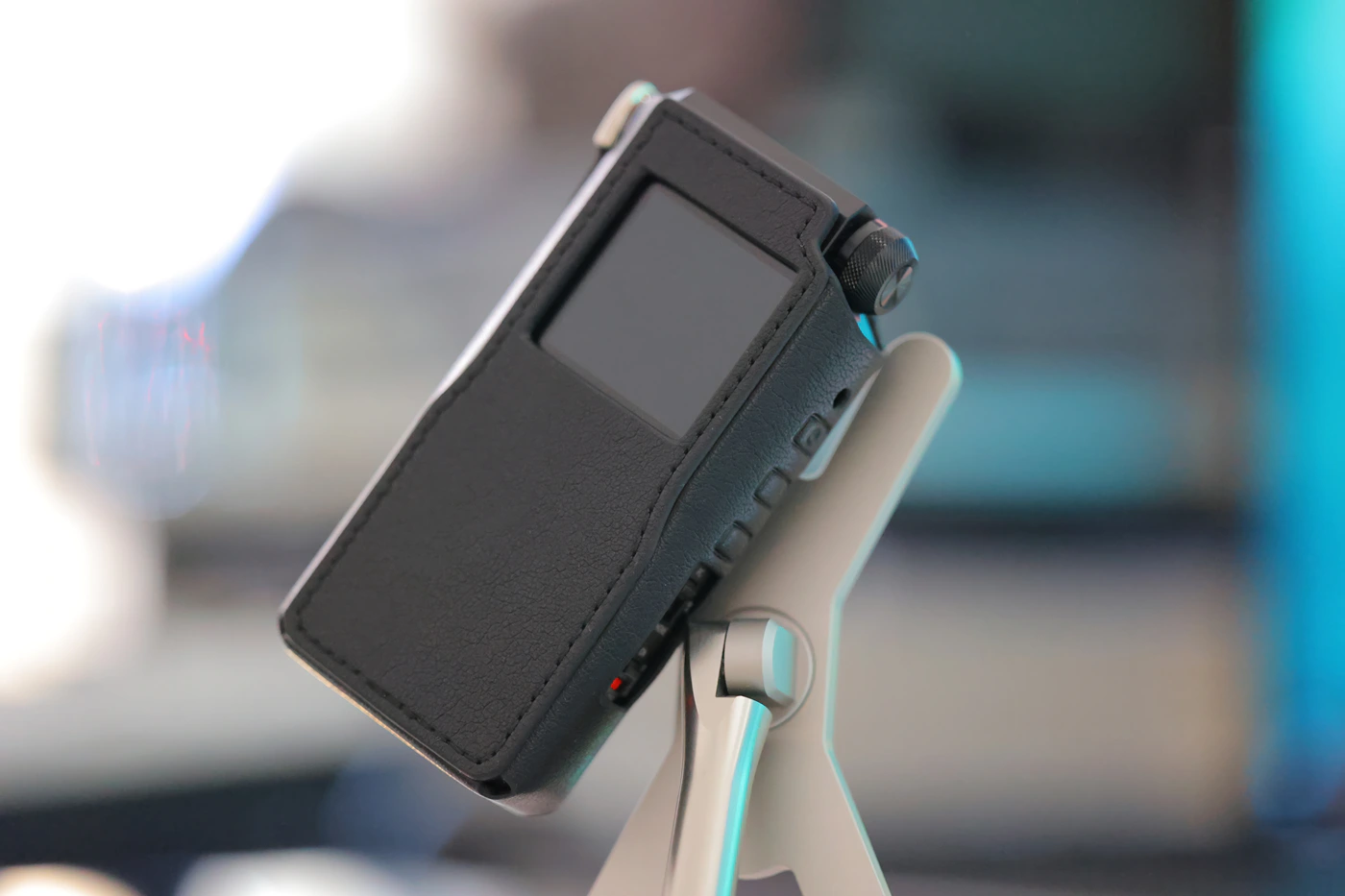
PROs – Comprehensive support for multiple listening modes, multiple source devices, both for IEMS and Headphones, and a nice shape. It is very small and ergonomic, much bigger than BTR5, yet still very portable. Nice crisp display that shows the current bluetooth algorithm used, along with the current data rate. Desktop mode is very nice but requires two cables to be connected. Volume wheel and included leatherette case, plus the included and applied display protector are all very nice.
Cons – First quarter of a second of each second is cut, Sound is better the louder you go.
Product Link
Amazon – https://amzn.to/3E1AS8I
Build Quality/Aesthetics
Starting with the build, BTR17 is a bit bulkier than BTR5 and BTR15, it is almost double the size of BTR5, but it is still far smaller than a smartphone, or a full-fledged large DAC/AMP like FiiO Q15. It is basically small enough that I consider the BTR 17 ultra portable, but bigger than BTR3 by more than double in size.
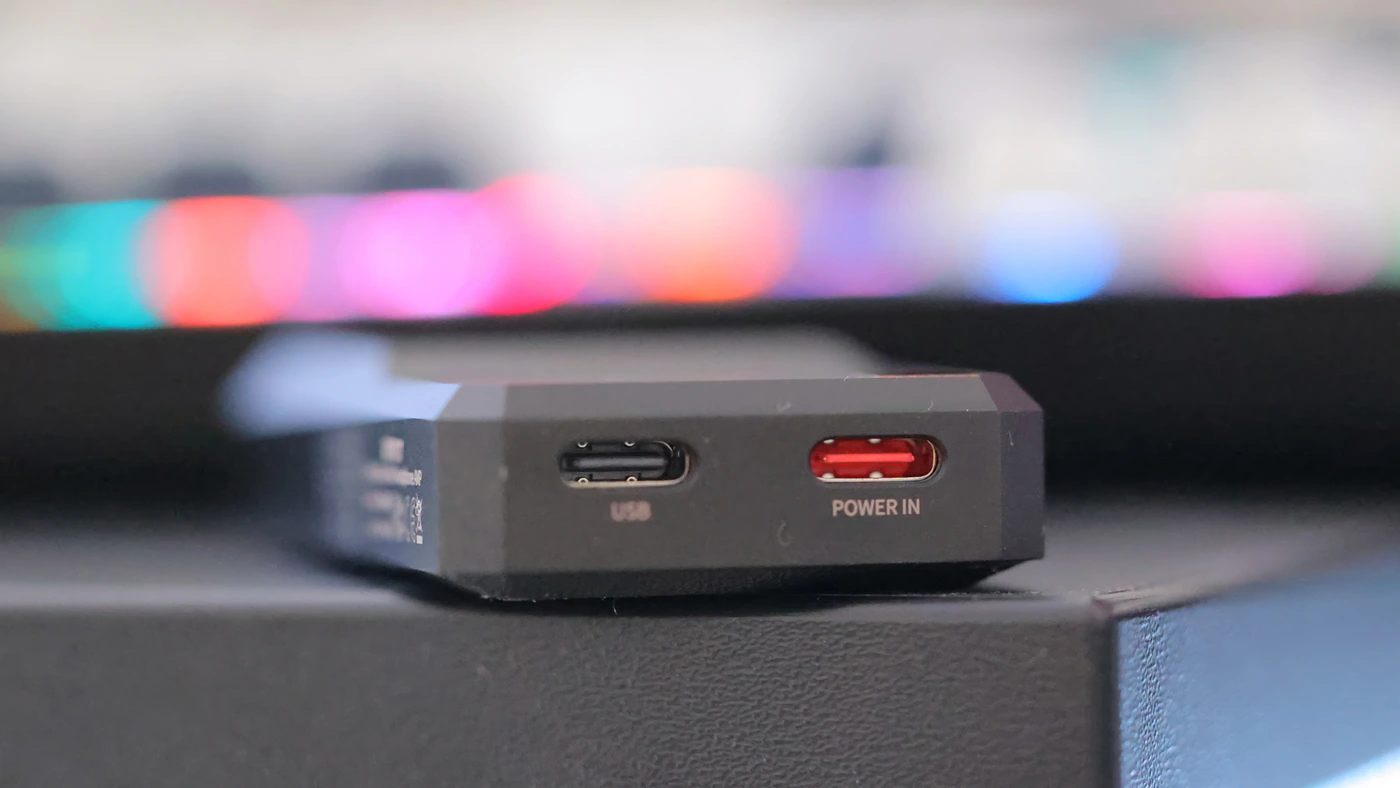
The idea behind a FiiO BTR17 was to bring together FiiO’s in-depth expertise of making DAC/AMPs and make something that is truly portable. BTR17 is meant to be the master of all trades, and to become the new standard for Bluetooth Headphone AMPs. To build on this, FiiO implemented the high-end Qualcomm Bluetooth QCC5181 Chip, which uses the latest Bluetooth 5.4 standard and has a bandwidth capacity of 2.1MBs, but is also capable of transmitting lossless signals with the aptX Lossless system. All Bluetooth codecs are supported, including AAC, SBc, aptX Adaptvie, aptX HD, LDAC and aptX Lossless. The best sounding algorithm is theoretically aptX Lossless, with LDAC following right after, aptX right behind, then aptX Adaptive, then AAC then SBC. Using the Red Magic PRO 10 I am unable to really use aptX Lossless, although LDAC at max quality and aptX HD both work well, with no signal loss, and an exceptional quality – which is better than even FiiO UTWS5 latest generation.
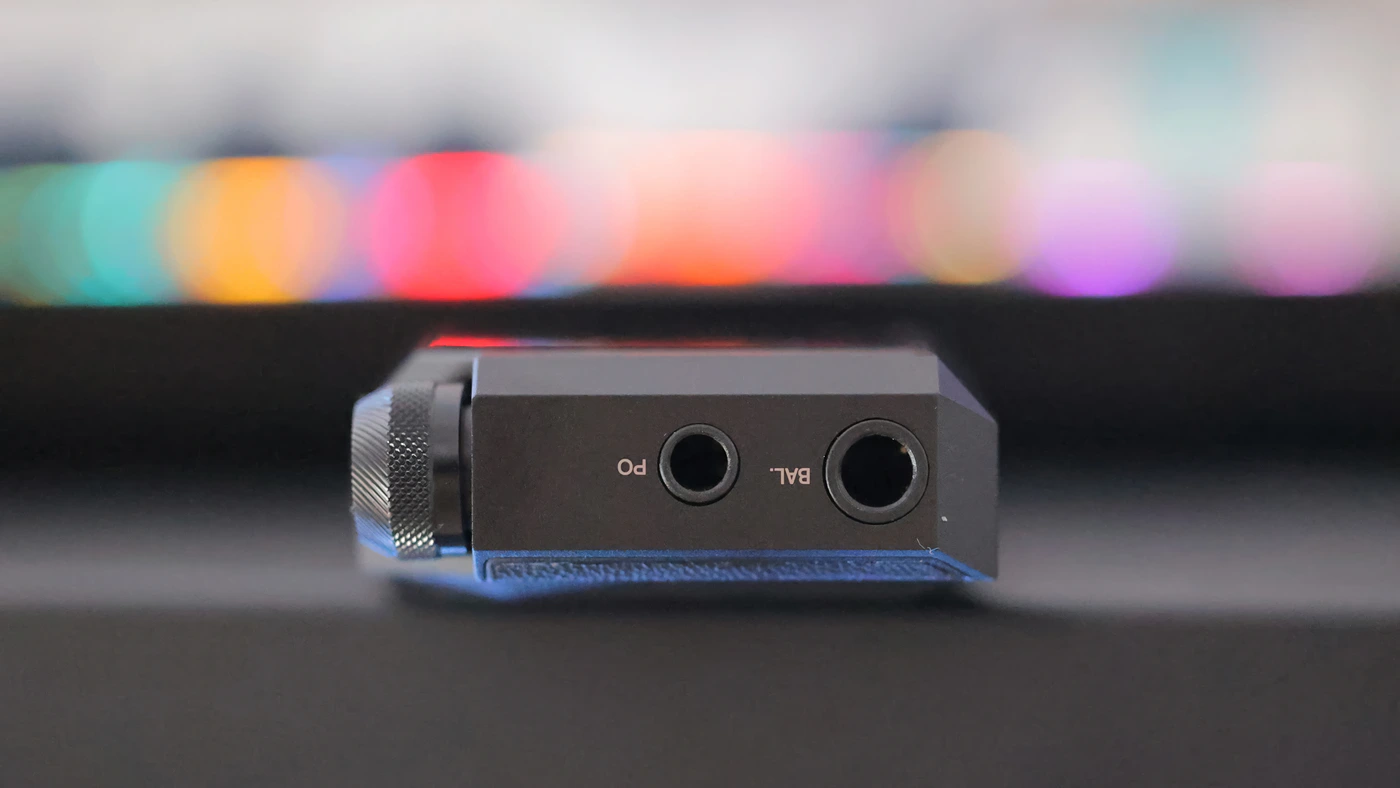
I know you love high driving power, so you will be happy to hear that BTR has an Independent Desktop Mode with a Boosted performance, also named D.Mode on the device itself, which will bypass charging the internal power supply, and allow BTR17 to draw power straight from the power In Type-C port and provide a much stronger sound. This mode is actually Patented with the patent number ZL202321946664.8 and FiiO is one of the main developers of the Desktop Mode idea, as we’ve seen previously in their Q15 DAC/AMP.
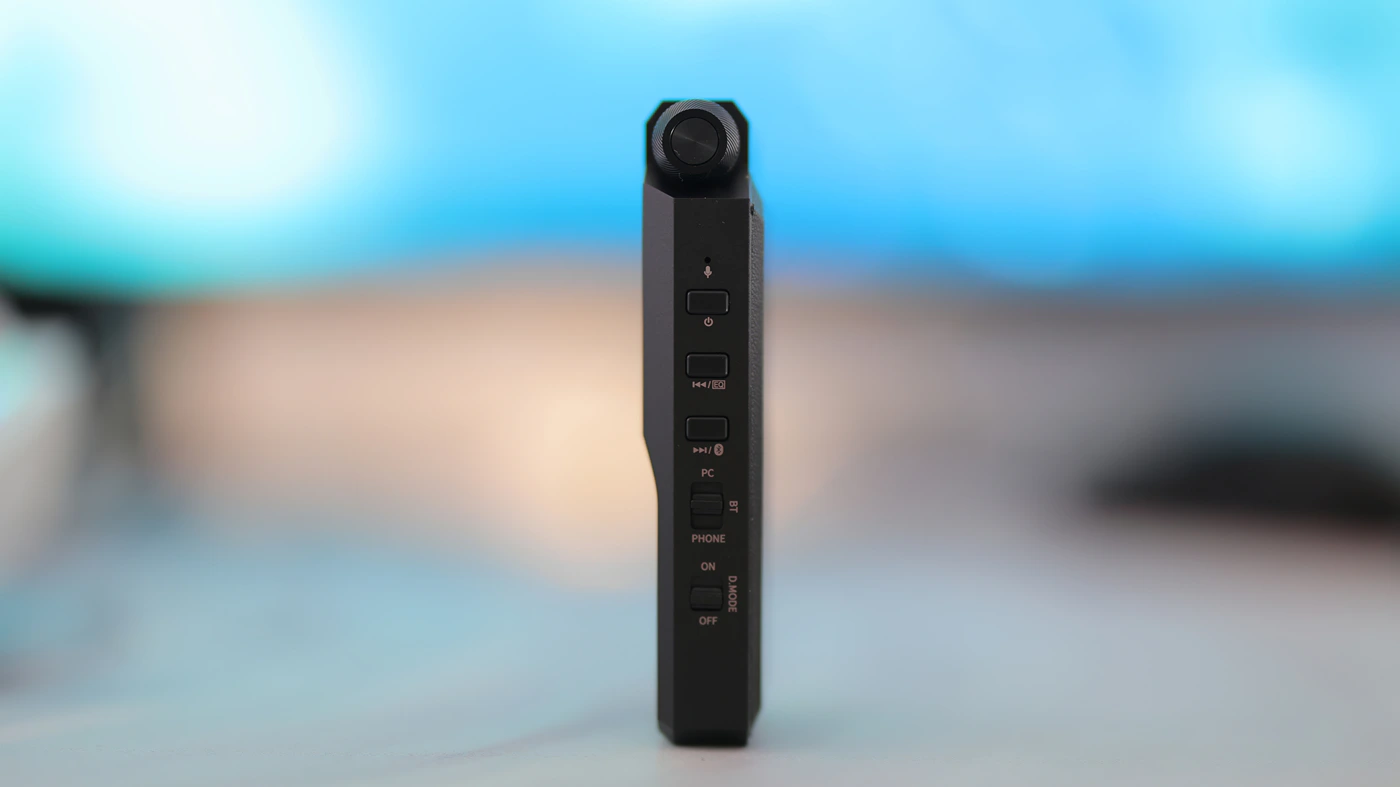
There’s a dedicated switch to select the current input, which allows you to switch between PC (computer sound card drawing power from the PC), BT, which is a full wireless mode, and Phone, which does not draw power from the internal battery, to save on your smartphone, and this mode is meant for wired usage with a smartphone. The USB chip used in the BTR17 is the Innovative XMOS 16-Core XU316, which supports full MQA decoding, and a maximum data rate of 768 kHz / 32 Bit and DSD512.
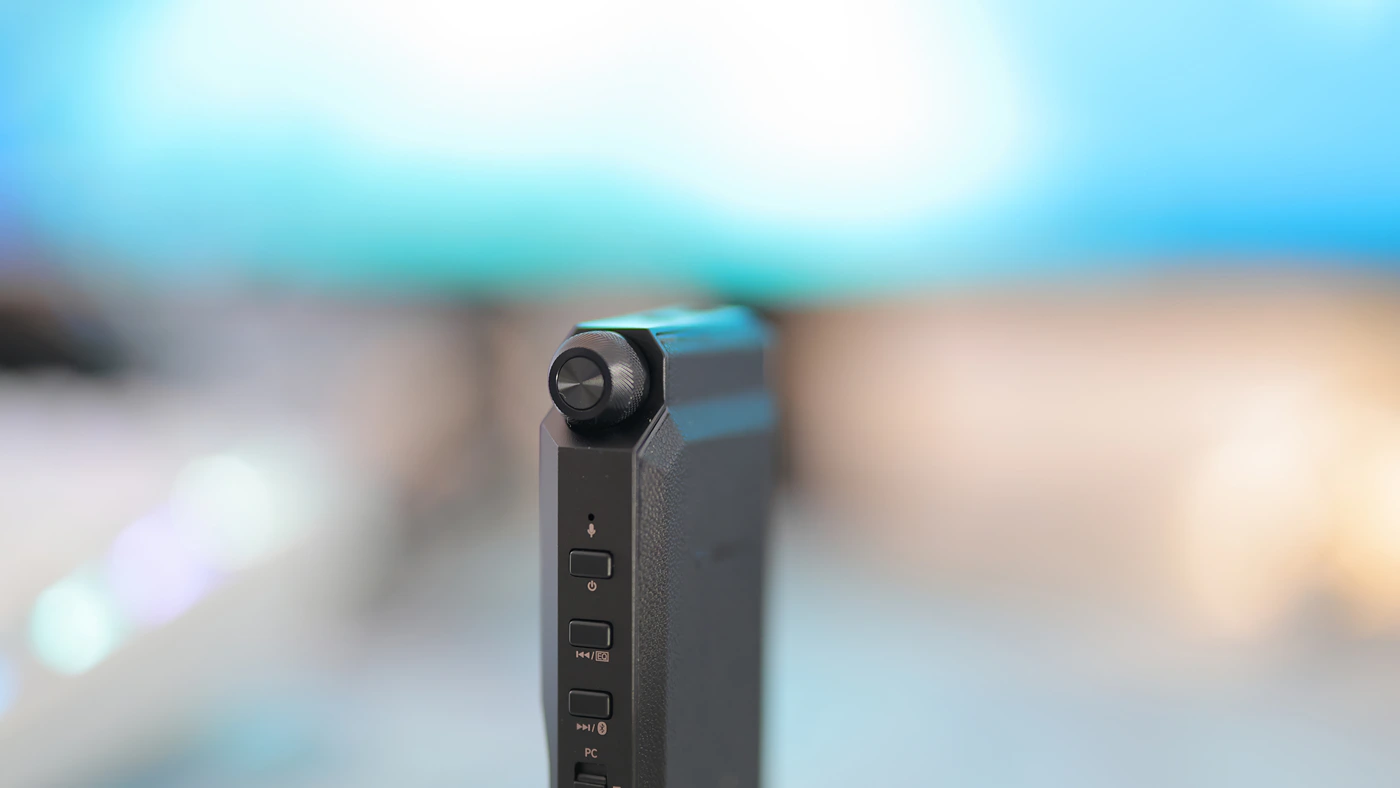
The phone app software allows you to select the preferred Bluetooth codec, to set a complex EQ with 10 bands and parametric data, and also to set what each button does for playback. This phone app moves very slowly, and it generally takes 3-5 seconds to register anything you’re doing, but at the end of the day, it all works alright for listening to music, and once set you generally don’t enter the FiiO phone app again, only the music app which usually works quickly and efficiently. To complement the competent software and strong decoding hardware, we have a Flagship Level (called as such by FiiO) Dual ES9069Q DAC, with a total DNR of 130 dB, and a THD of 120 dB. The fun part is that this is actually a good DAC, and while it is more of a portable, it should be plenty good for the class BTR17 plays in.
Matching the DAC we have the improved THX AAA78+ Headphone Amplifier, which is the same as the one used in FiiO KA17 and FiiO M23. This is a four-Channel, Fully Balanced AMP solution, utilizing 8 OP-AMPs in Parallel to ensure a robust and controlled sound. You can engage the Desktop Mode which activates the full potential of the THX AMP, resulting in a 650 mW + 650 mW maximum, driving power, a 203% increase in driving power compared to FiiO BTR7, comparable or even better than even some desktop AMPs.
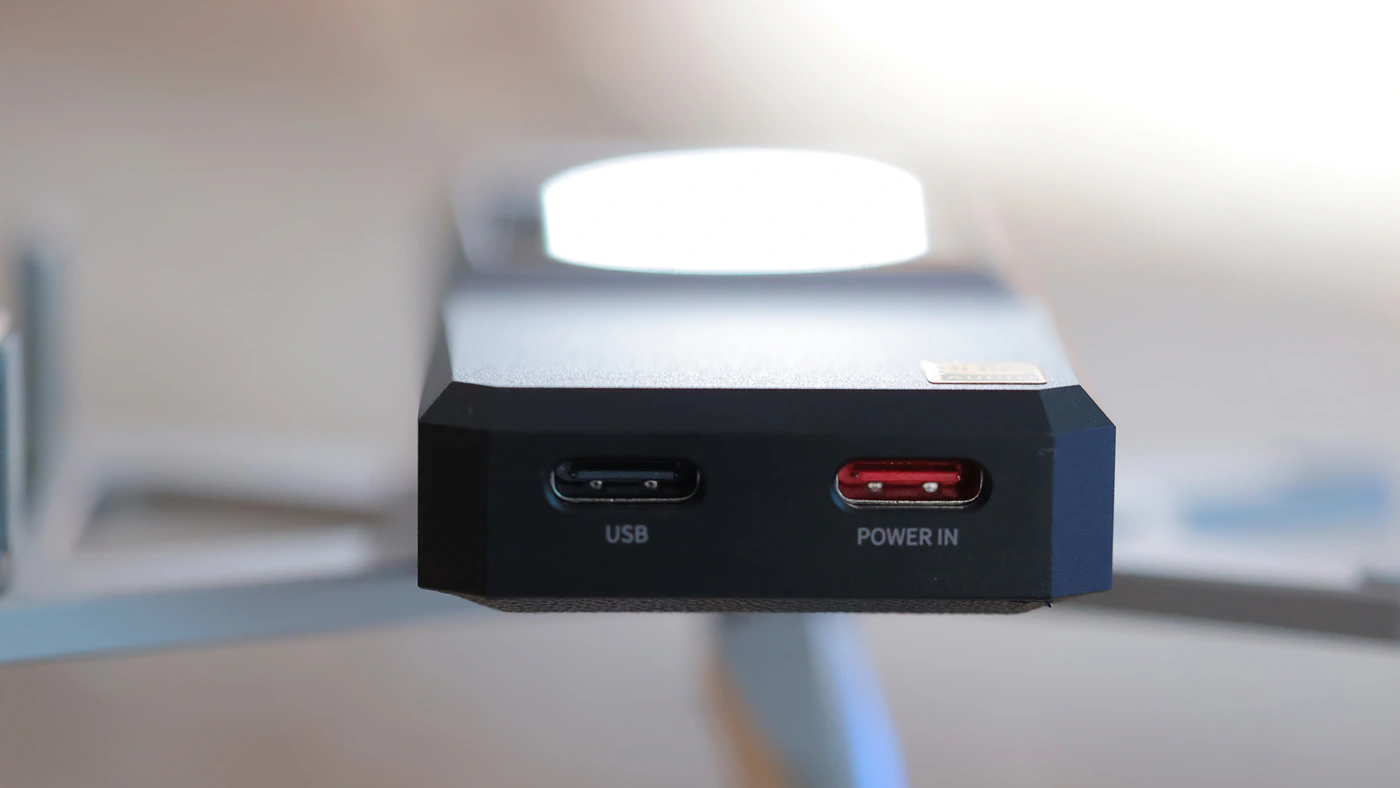
FiiO went bonkers with the protection, and we have DC output protection, and temperature protection, along with volume limit to protect your BTR17, Headphones and Hearing regardless of what mistakes you may make. There are two headphone outputs, 3.5mm single ended and a 4.4mm balanced headphone output, and BTR17 works driver-free too, compatible with UAC1.0 standards, so it can work with Nintendo Switch, PS5 and other devices too. It comes with a leatherette case, and a high-quality cable in the package.
Battery
FiiO does not disclose in detail the battery size of FiiO BTR17, but it can offer about 8 hours of battery life as promised by FiiO, or around 7 hours as tested by me with either hard to drive headphones, high volumes, and IEMs. This is with LDAC, and most other algorithms actually consume less, plus BTR17 does not charge very fast, but reasonably, in 2 hours from 0%.
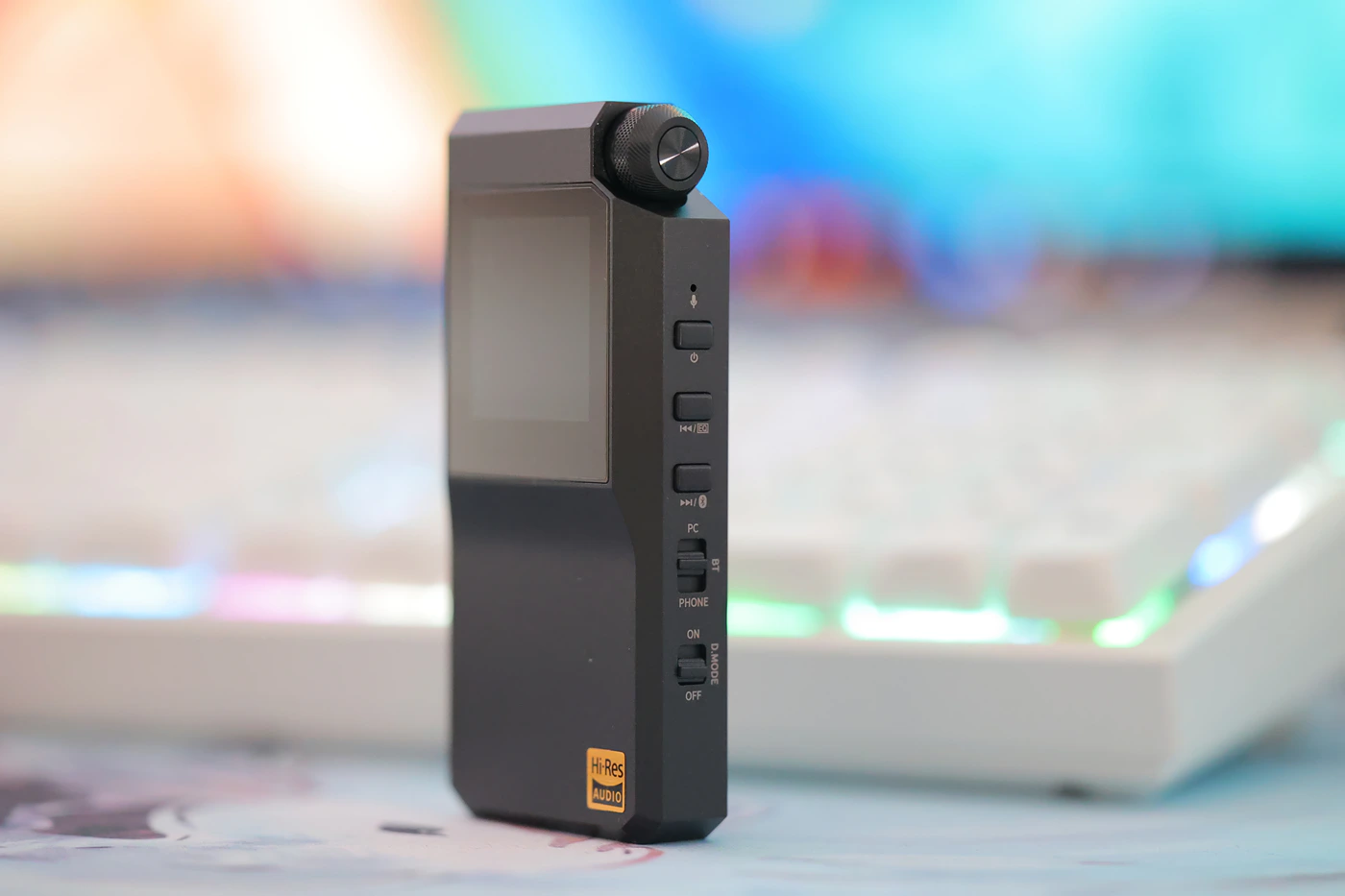
Generally, if you start the day at full battery, you will not need to recharge until night comes, and it is not an issue.
USB DAC / Subjective Usage
Upon opening and pairing BTR17 with my Red Magic 10 PRO Smartphone, I got to install the latest update, and here we go, aptX Lossless finally works with a commercially available setup. And just as I was writing this line, I actually lost the aptX Lossless and cannot find how to engage it. Sadly, aptX Lossless still remains a mystery and chasing it is like ghost hunting, but one day we may have smartphones that openly and freely support it.
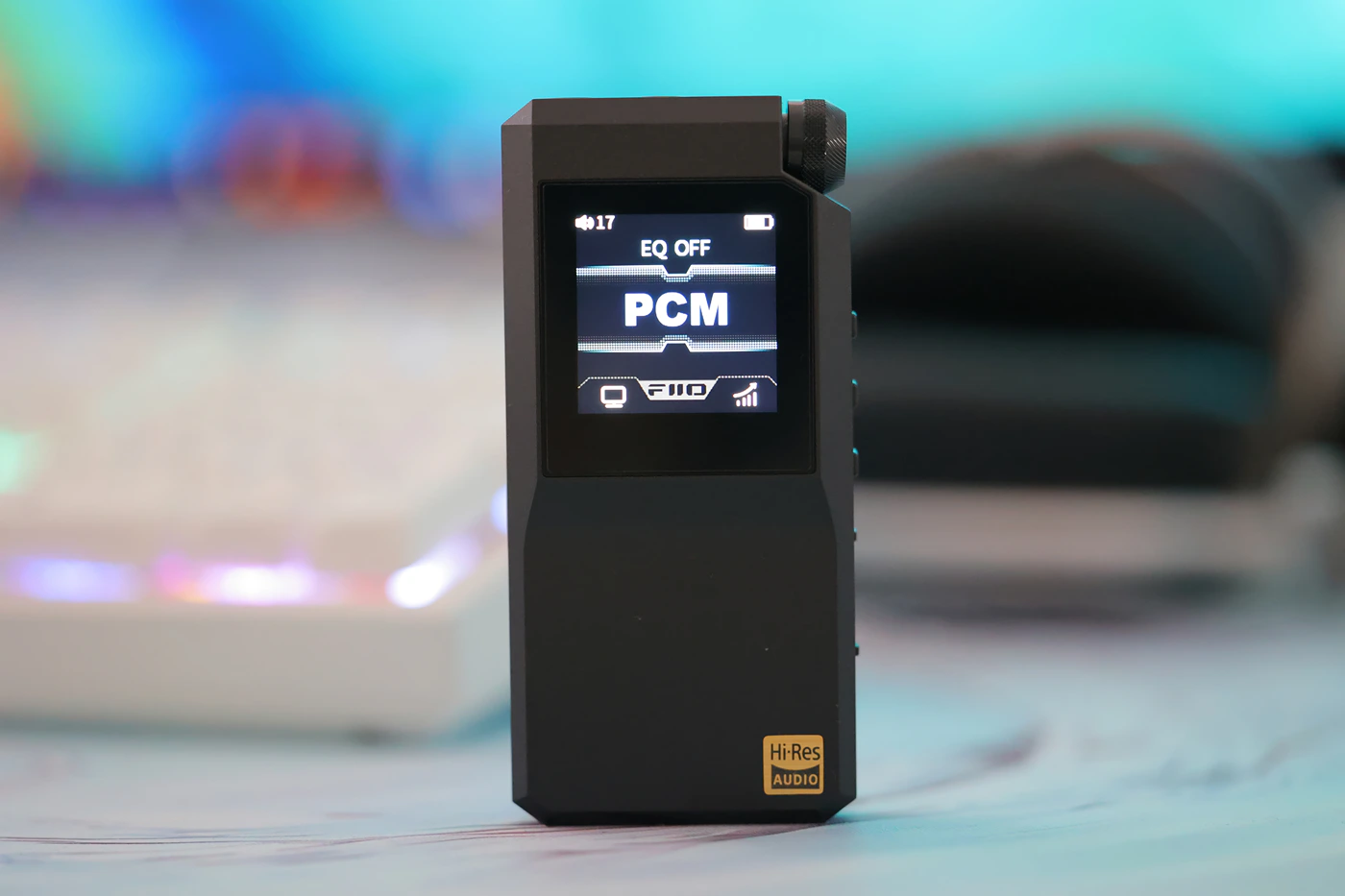
The IPS display is useful, you cannot set a lot from the BTR17, and you need to use the FiiO app to set most things, but it is helpful to know it is decoding currently, what protocol is being used to get something to let you know it is working. As a rule of thumb, I really want and like to have a display on bluetooth and wireless devices. Although there is no actual delay when using BTR17 as a wired DAC, there is a pop sound that indicates BTR17 turns off the AMP entirely when there is no sound playing. Running this test indicates that there’s a strong power saving feature, and when sound starts after a pause, even a short one, you will get a slight pop sound together with the first note of music. This also means that the first quarter of a second is not reproduced every time you press play after a pause, even a one-second long pause.
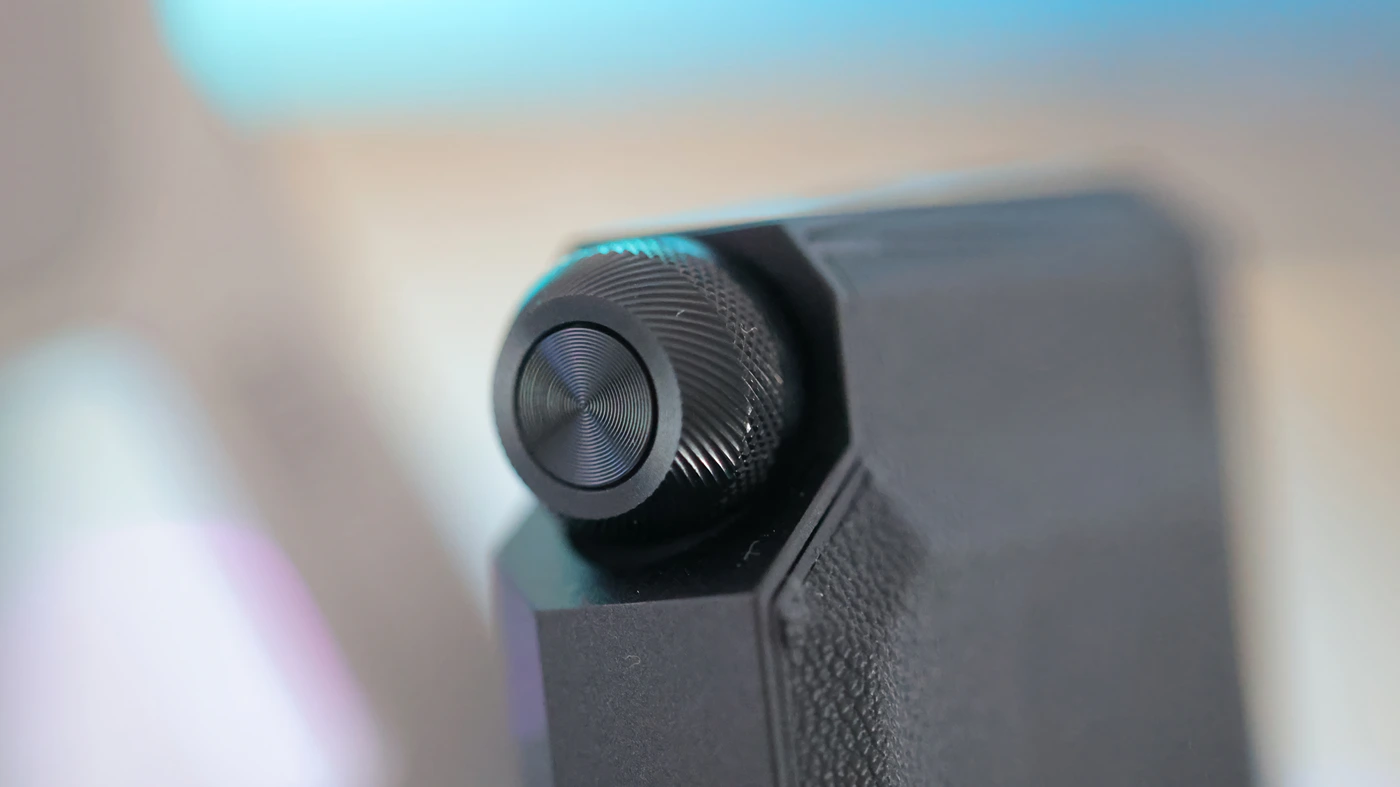
I expected the desktop mode to actually run the BTR17 very hot, but it runs cool, it heats up more when it is running wireless and driving either IEMS with a low impedance or very hard to drive headphones. This being said, having two USB cables so close to each other is uncomfortable and bothersome for me. The pre-installed display protector is nice, and FiiO offers detailed testing data for BTR17, so you will know what they are up to during technical engineering of the unit. I generally experienced zero bugs and issues with it, it simply works, although setting the preferred Bluetooth algorithm is fiddly at best. The big save comes from the fact you set it once and forget about it.
Sound Quality
Pairings – To test the new FiiO BTR17, I have paired it with multiple IEMs and headphones, including Campfire Moon Rover, Moritz Dragon, ZiiGaat Arcadia, Campfire Bonneville, HarmonicDyne Devil, Crosszone CZ-8a Enhanced, Hiby x FAudio Project Ace, Erzetich Mania V2024, Mirph-1, Audeze MM-100, and just for fun I did pair it with HIFIMAN HE1000 Unveiled, and HIFIMAN Susvara. All IEMs are driven with ease and there’s no audible background noise, or hissing, and most headphones are driven very well using the BTR17, although it will struggle with extremely hard to drive ones like Susvara, and even HE1000 Unveiled works much better with Q15 than BTR17. This being said, BTR17 is plenty powerful and will create a controlled, deep and punchy bass when driving the Mirph-1 and Erzetich Mania V2024. Even with the most sensitive IEMs, I can hear absolutely no hissing or background noise, everything is sharp, clean and the background is black and quiet.
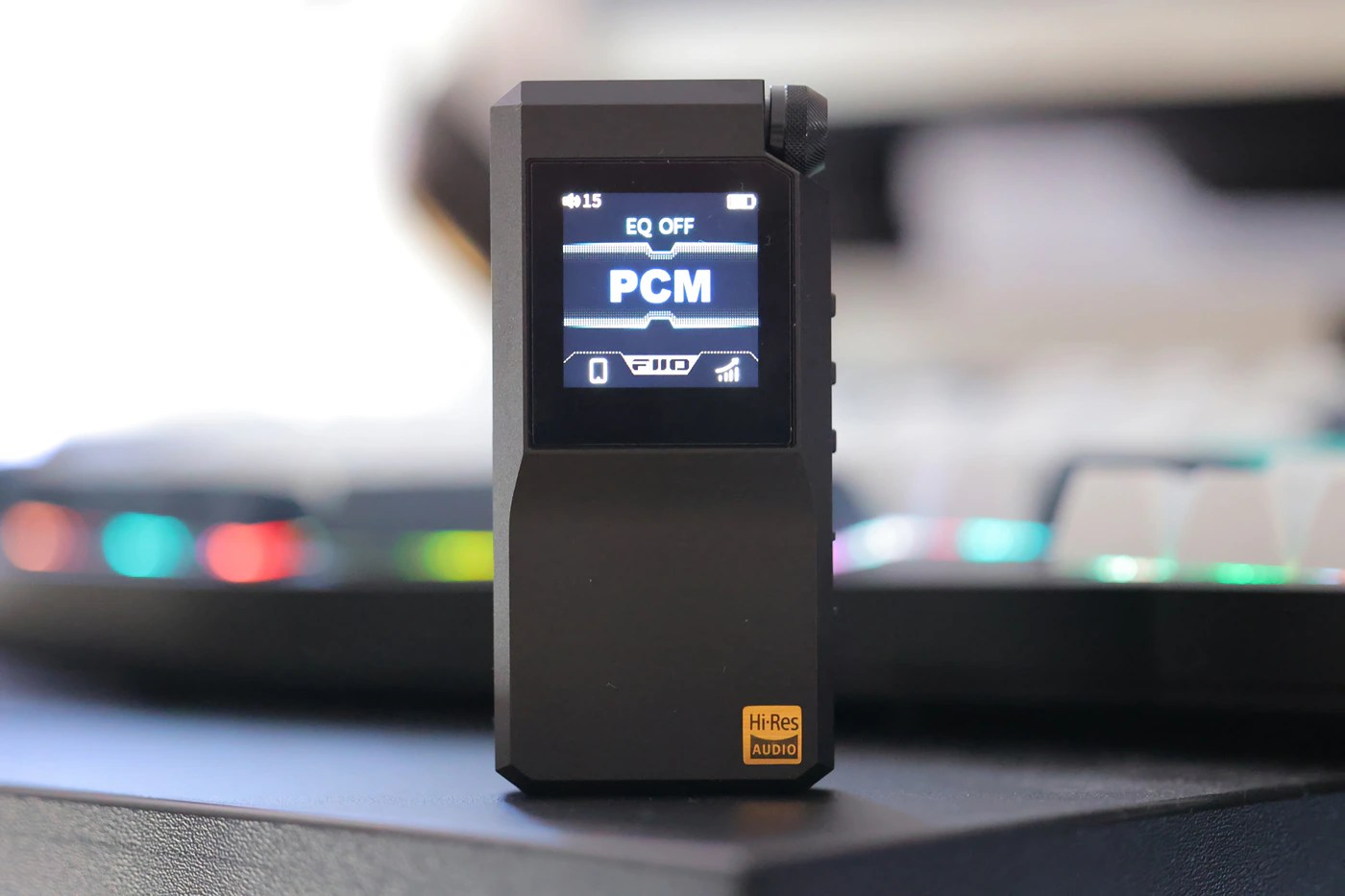
Overall Signature – FiiO BTR17 is a vivid, lively sounding receiver / headphone DAC/AMP, with a sharp treble, lively voicing, forward and colorful, contrasty midrange, and with a deep and controlled bass. The midrange in particular has a special musicality to it, enhanced by a rich resolution and excellent revealing ability. BTR17 delivers basically all that I could desire sonically for driving IEMs, and does an excellent job, even with hard to master units, while having more than plenty of power for some of my favorite headphones, including Erzetich Thalia, Palma DHS-1, and FiiO FT1 PRO.
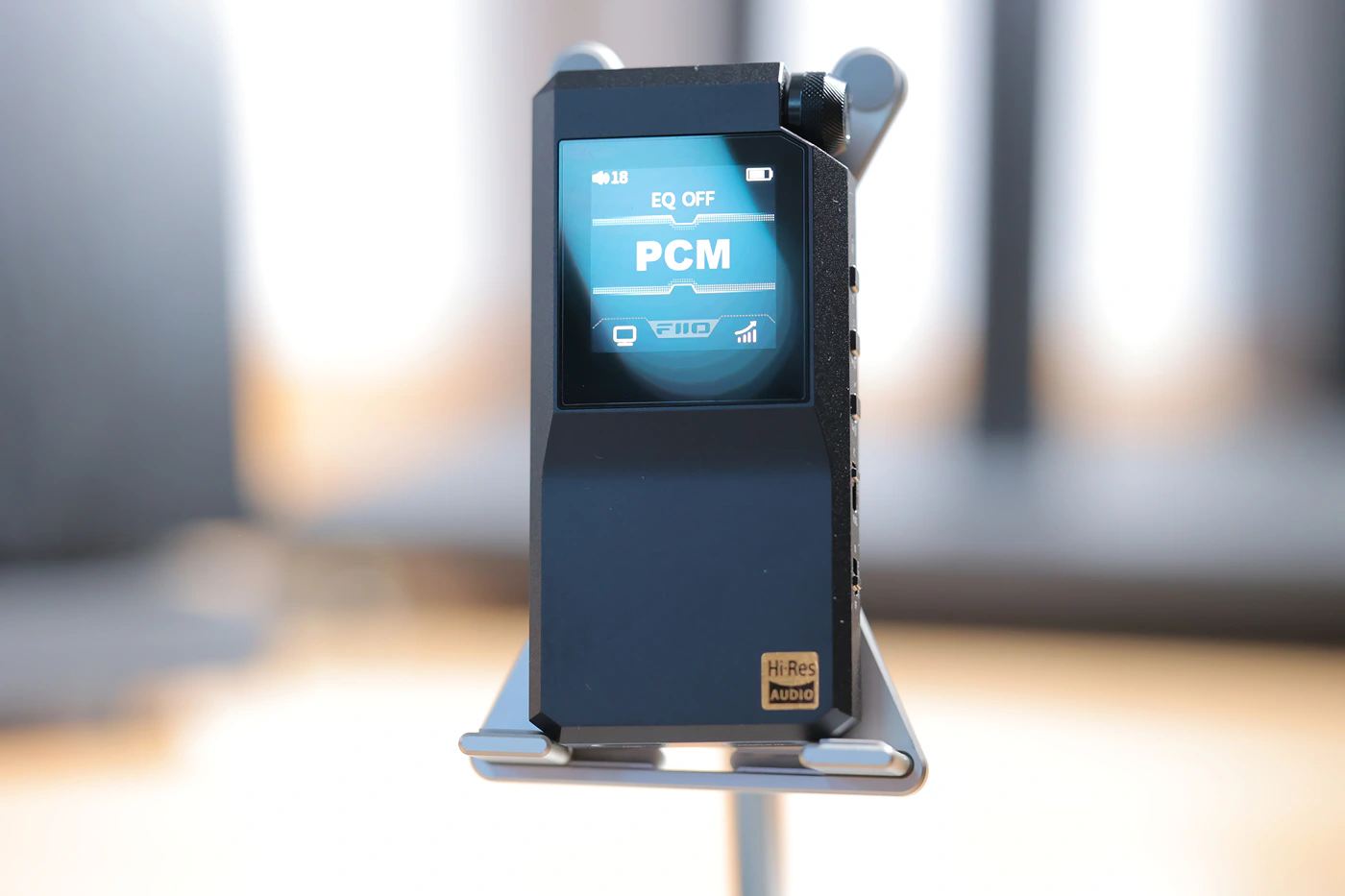
The difference between LDAC or aptX HD and Wired is very small, but the wired connection has a richer, more detailed sound, and you will hear the compression when using the Bluetooth mode, although only slightly. It is almost audibly transparent. The bigger difference can be found when using BTR 17 in the desktop mode, it really pumps up the dynamics, sonic resolution and clarity, and I feel like this is the best it can offer, so most of the sonic impressions have been taken using the BTR 17 wired as a USB DAC connected to my PC computer, and in desktop mode, with the power being fed from a 2nd USB port also found on my computer. As I did not want to give it an unfair advantage, but wanted to hear the best it has to offer, this combo offers a likely scenario for most people, and especially as BTR17 is a bit too large to take portable as much as BTR5, or BTR15, this should be a good sample of what you will hear at home.
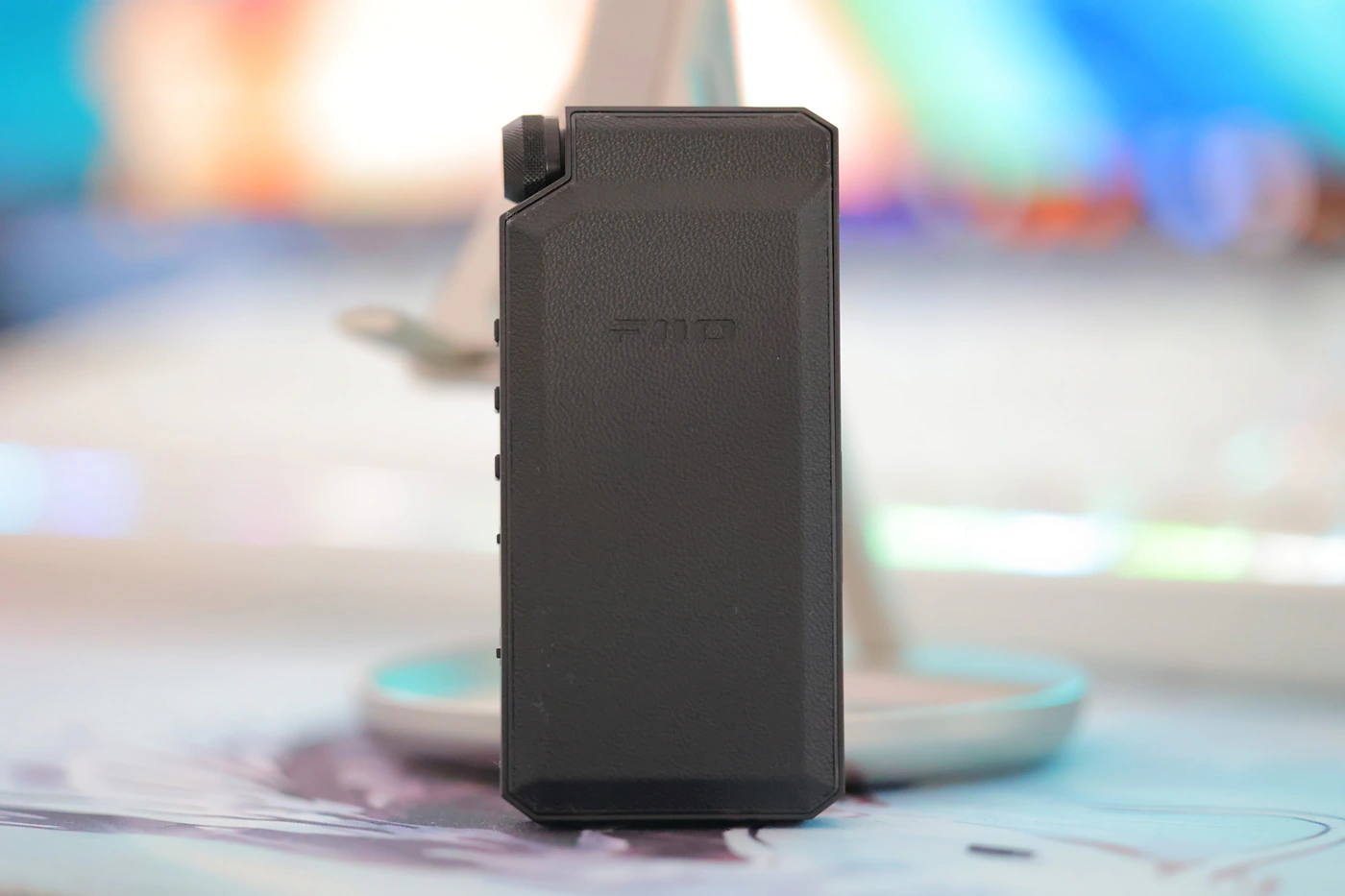
Bass – Starting from the bottom, BTR17 presents music with a bold, full, but controlled bass. There is no loss of control at any point, and BTR seventeen can reproduce every single note, even those that are exaggerated in the song, like with EDM, Pop and even Dubstep pieces. There’s a clean transition from the lower to the upper bass, with no exaggeration of the upper bass, and most of the energy is focused down at the bottom of the bass response, as BTR17 reproduces exactly the low notes we ideally want to hear, the sub bass.
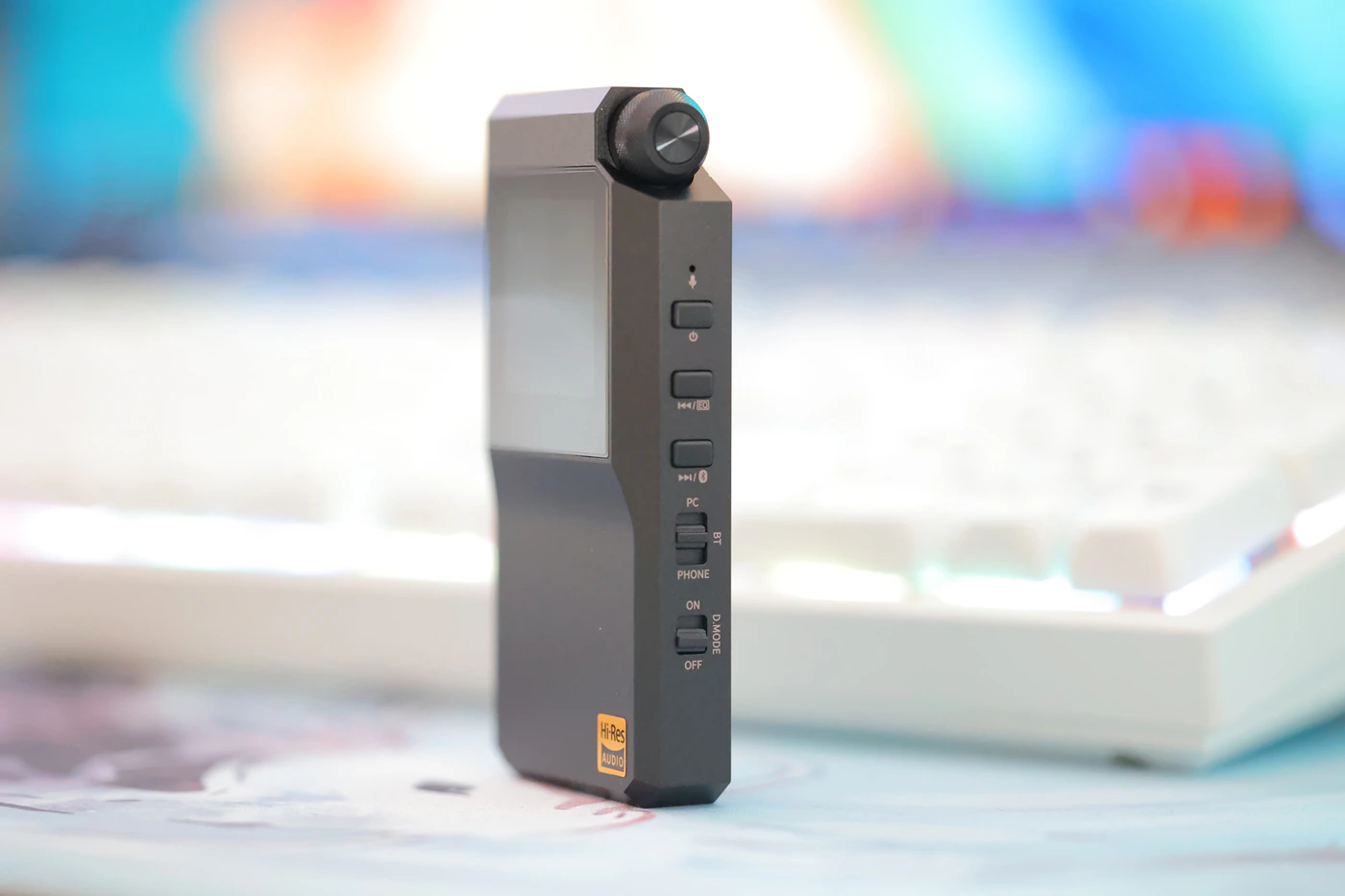
Midrange – With a sweet, organic voicing, BTR17 is quite excellent at rendering a musical, full and rich mid presentation. I am in awe every single time I hear it, both male and female voices are vivid, lively, and realistic. There’s a wealth of information and BTR17 is not afraid to reveal that information, to create the punch, kick and render the information in each song. Both the foreground layer is kept free of distortion regardless of the volume, while the background layer is rendered detailed and crisp, well-defined, and never lost in the mix.

Treble – To complete and top off the already lively signature, BTR17 has a sharp, brilliant and crisp treble with a lot of energy, strong extension and exceptional resolution. This means that you will hear everything, and BTR17 is not a forgiving DAC/AMP, it reveals the good and the bad, but for most of my music this is a plus as I like what I am hearing, and I even yearn for more.
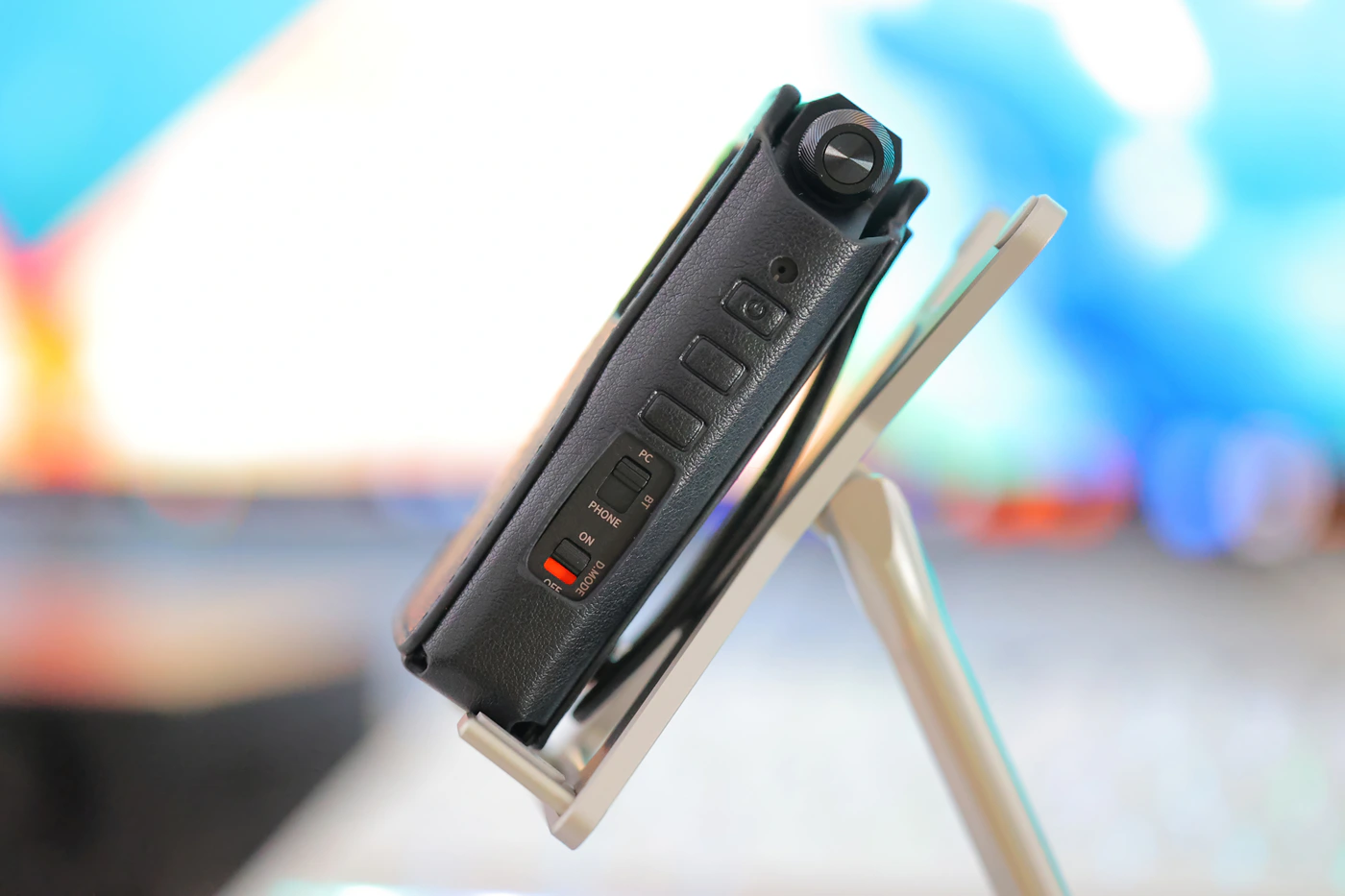
Dynamics – If this was not obvious already, BTR17 is an insanely dynamic, punchy and colorful DAC/AMP, it somehow extends on the dynamic range, it gives more space for music to play, without sounding very wide or scattered, it can reproduce all the instruments it has to, with zero distortion and zero loss of information. There are many details that are lost with other DAc/AMPs, even much pricier ones, but which BTR17 brings forward and reveals to the listener sharply and clearly.
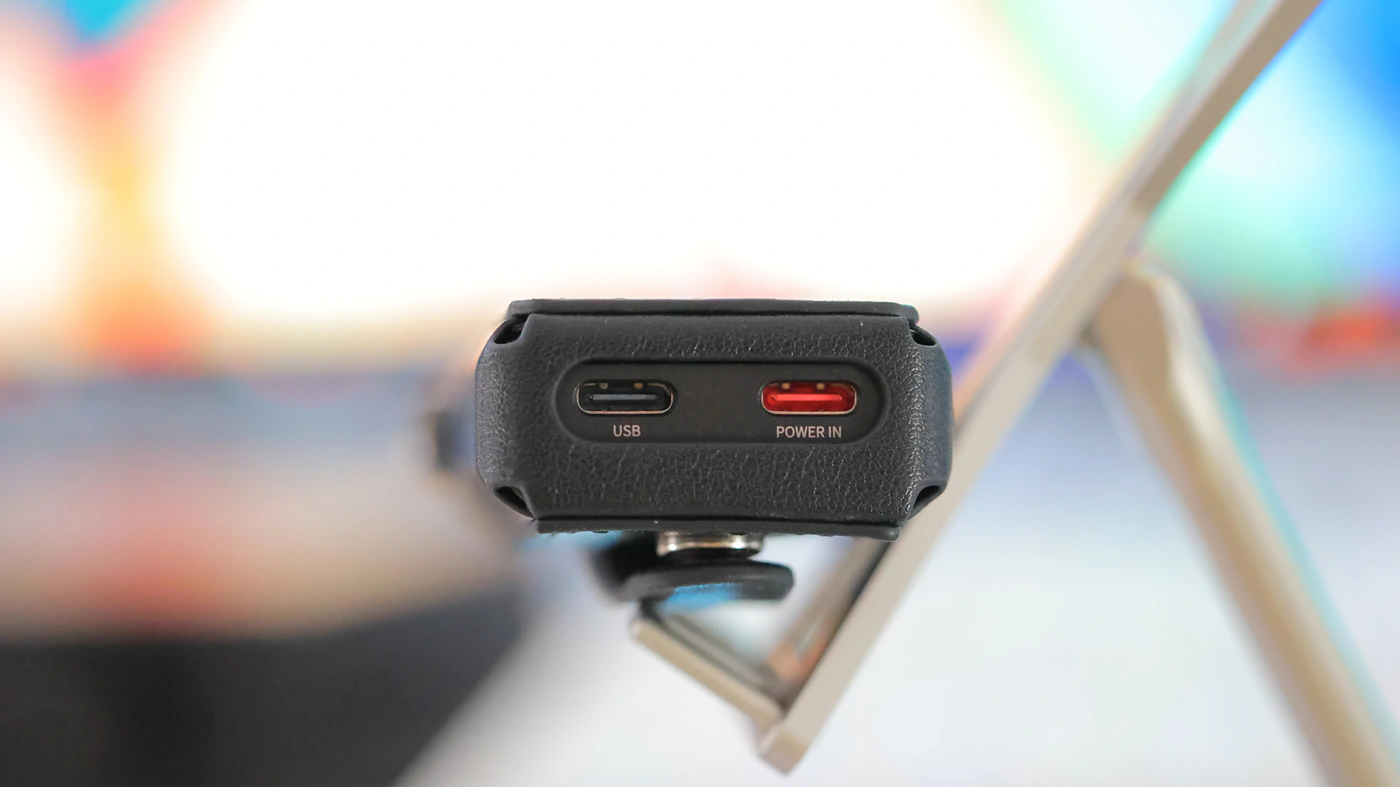
PRaT / Textures – We have a natural texture in the bass and the midrange, but a sharp, almost slightly texture in the treble and the high-end. This creates a strong feeling of detail for most songs, but can also be slightly fatiguing with certain music, especially metal and aggro subgeneros like Technical Death Metal and Black Metal. With Pop and Dubstep, it creates the feeling of details and clarity, enhancing the midrange.
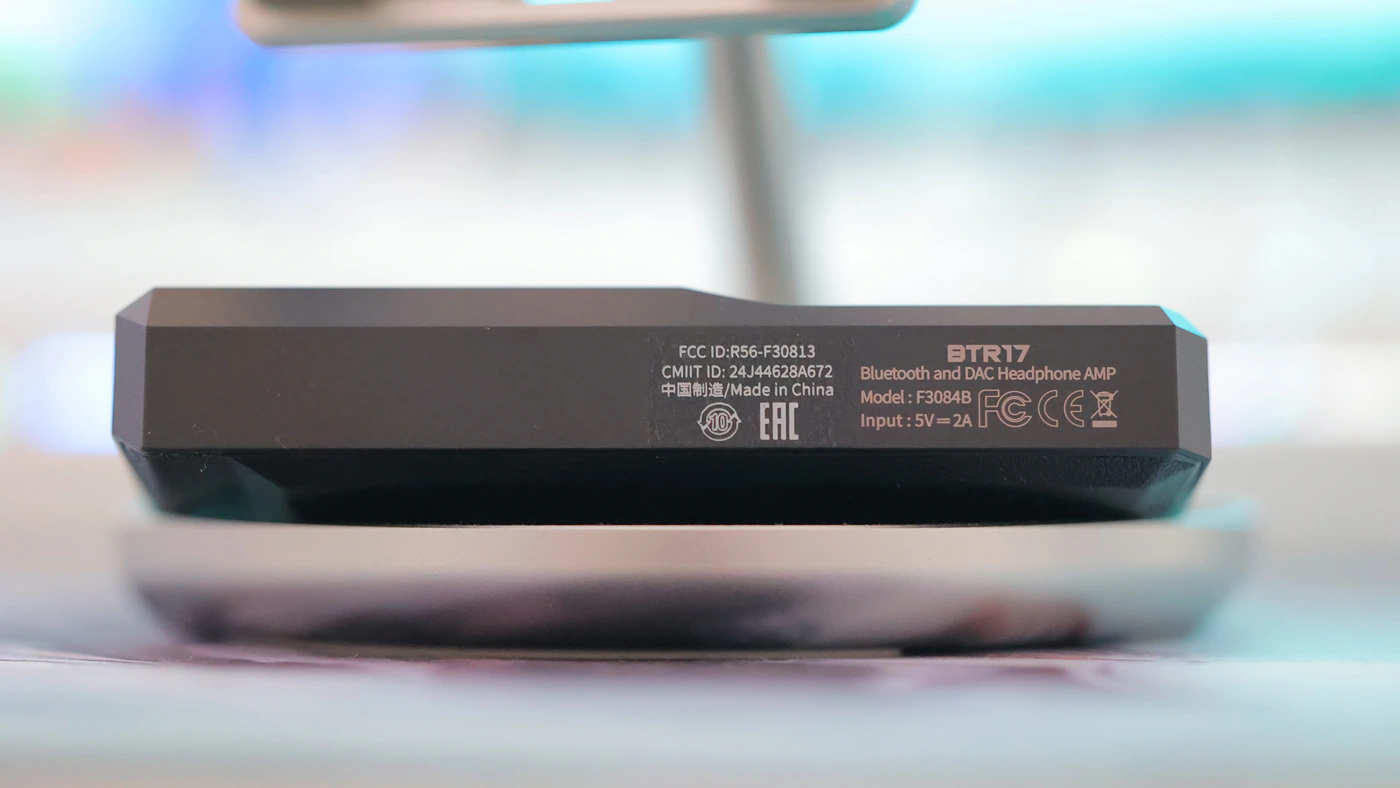
Loudness Saturation Gradient – The loudness saturation gradient is a mixed bag, because BTR 17 sounds audibly better at higher volumes, the louder you go, the better it sounds, and this is an obvious effect. Dynamics get better, contrast is more evident, and the whole sound is just more detailed and richer, more balanced, the louder you go.
Soundstage – The staging is natural, it expands naturally in width and dep[th, although BTR17 is not a very wide sounding Bluetooth DAC AMP, and it places more emphasis on instrument definition, resolution and instrument separation / layering. Those are top notch, while the staging itself is natural, expands to the bounds around my head.
Comparisons
FiiO BTR17 vs Shanling UP5 (199 USD vs 179 USD) – We have two devices that essentially are doing the same thing, and UP5 has been a favorite here at Audiophile-Heaven, although specially once you dress both of them in the official leather case, BTR17 looks bigger, and also sturdier. Shanling has implemented less features, there is no desktop mode like with BTR17, and the maximum driving power is much higher on BTR17, and we’re comparing 240mW on UP5, with 650mW per channel for BTR 17. This being said, sonically, Shanling has a warmer sound, a thicker and fuller sounding midrange, a smoother treble, and more relaxed high-end. FiiO BTR17 sounds more open, more vivid, more dynamic and more realistic, there’s more spatial information in BTR17, a better resolution, and a much crisper, sharper treble with more energy. Generally, if you want smooth and warm, UP5 will deliver that, while BTR17 will deliver an alive, lively and punchy sound. While both solutions sound great, the maximum driving power on B TR17 means better control and contrast with headphones, and also with IEMs, there’s a lower noise floor.
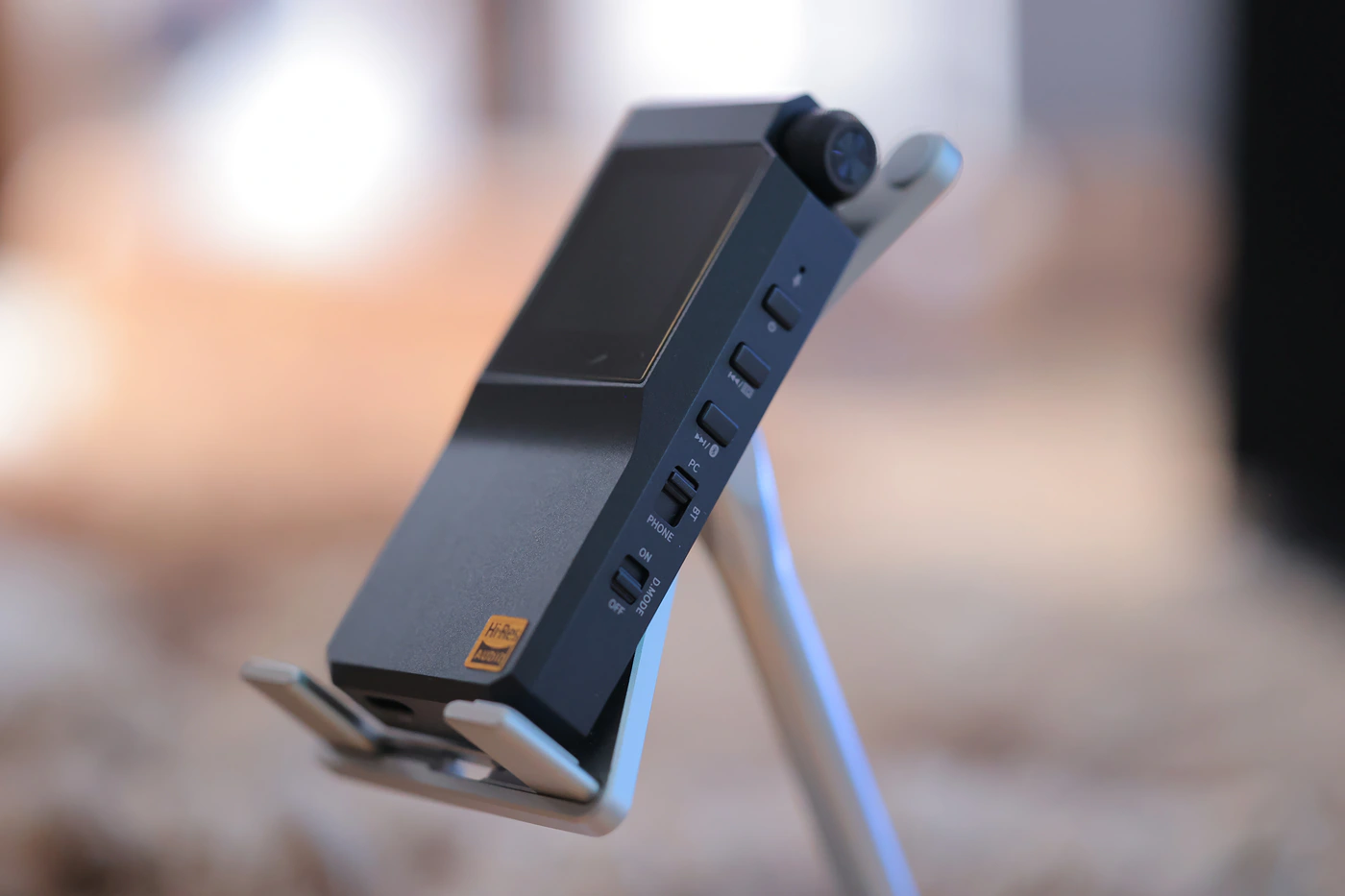
FiiO BTR17 vs Creative Sound Blaster G8 (199 USD vs 149 USD) – Although G8 is a different device, and a desktop DAC/AMP, it still has plenty of power, and is considered by many an option when taking into account what to purchase. I’ve seen so many BTR 17 units living at the heart of some vintage stereo systems, that I can safely recommend that if you do have a stereo system, you are better off with a G8, it has a more complex DSP processing, or even FiiO’s own desktop K11 is better for sitting at the center of a stereo system. BTR17 does have a best-in-class Bluetooth reception quality though, and when comparing things, I often think that BTR17 would be great to be found in a desktop unit, but something like that does exist, in iFi Zen Blue V3, although Zen Blue is much pricier and does not have quite the quality of the BTR17 for headphones. The idea still remains, BTR17 is made for headphones, and you’re adding quite a bit of extra distortion if you’re using it for a desktop setup, and you’re much better off with G8, although for driving headphones, BTR17 has a better control, more punch, a lower reaching bass and a fuller sound down low, plus a higher resolution and resolving ability in both the mids and the treble.
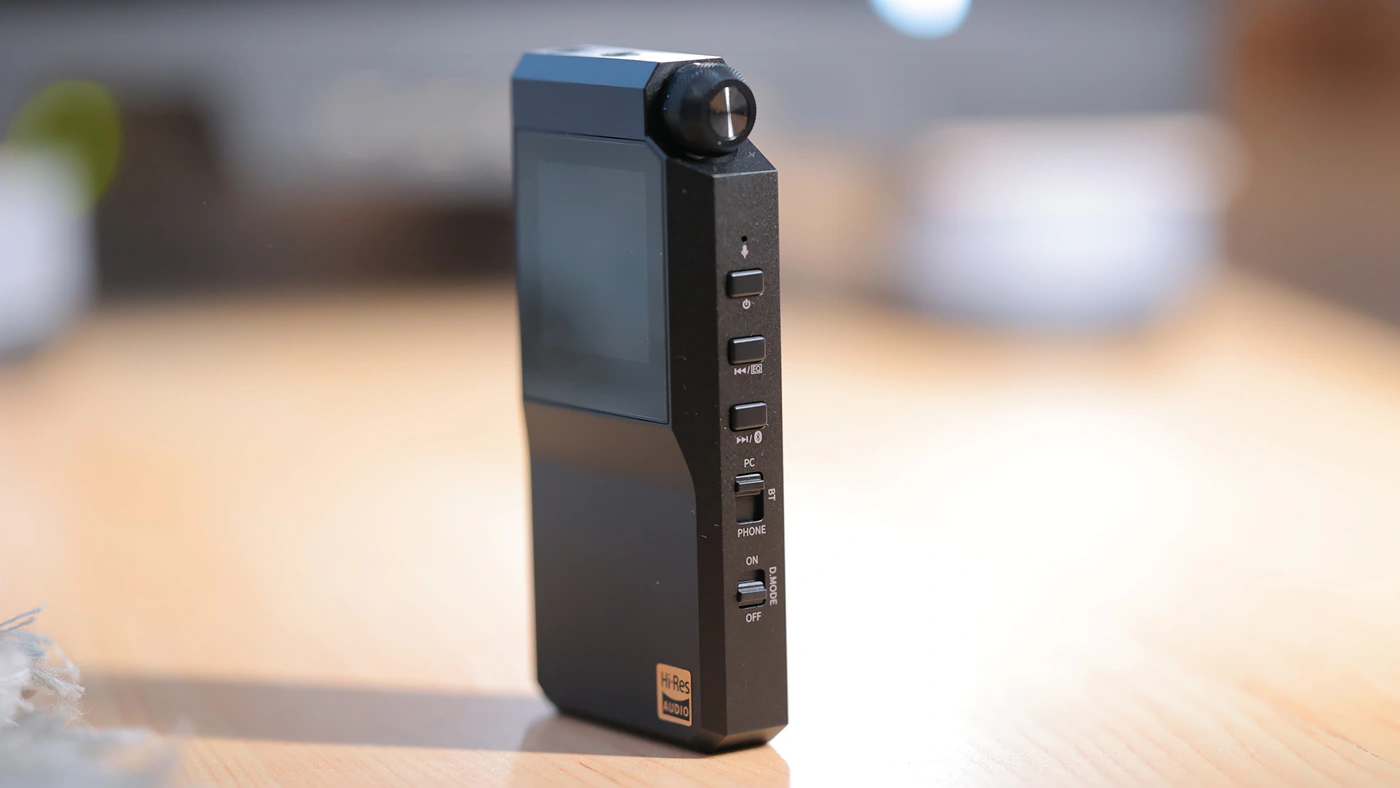
FiiO BTR17 vs FiiO BTR15 (199 USD vs 119 USD) – FiiO BTR17 is a whole bigger monster than BTR15, and BTR17 comes with a heavier, larger body, yet essentially they are the same thing, a bluetooth receiver, with a DAC and Headphone AMP inside. The biggest differences are deep beneath the surface, and when you plug in headphones, you hear those differences. Starting with driving IEMs, BTR17 has a much better control, deeper and punchier bass, and a much better instrument separation and overall definition. The same difference is heard with headphones, but to a much higher degree, and BTR15 sounds vague and mild, gentle, soft compared to BTR17, which bears a strong kick, much deeper and more controlled bass, and a more vivid midrange. Overall, BTR17 is a huge upgrade from BTR15 sonically with both IEMs and Headphones, and the signature brings an audiophile level of upgrade. If you have a BTR15 or BTR5, you can totally upgrade to BTR17 and will be enthralled with the movement, as long as you can bear the increased weight and size of the BTR17.
Value and Conclusion
When you look into it, almost no product on the market today has a price / performance ratio as high as FiiO BTR17, it is not just exceptional it is at the peak of the mountain when it comes to the price / performance ratio, it is a little dongle that does it all, costs very little and can be fully recommended to anyone wanting a hassle-free, fun experience with audio.
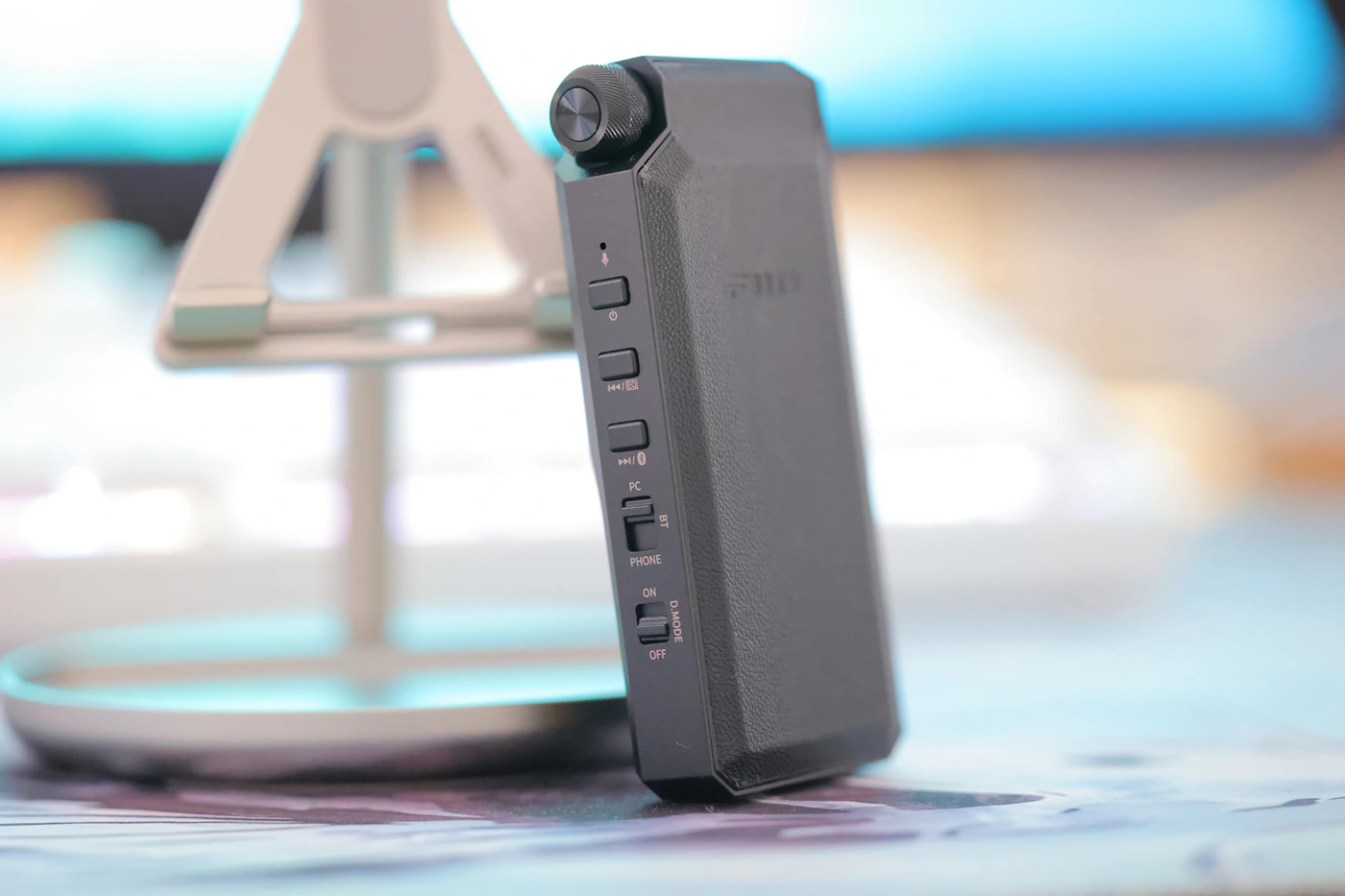
Award – FiiO BTR17 is currently the best sounding portable DAC / Headphone Amplifier / Bluetooth Receiver combo money can purchase and it is fully recommended, as we award it the Audiophile-Heaven Hall Of Fame award, for being the best sounding bluetooth receiver with the most complete set of features created to date.
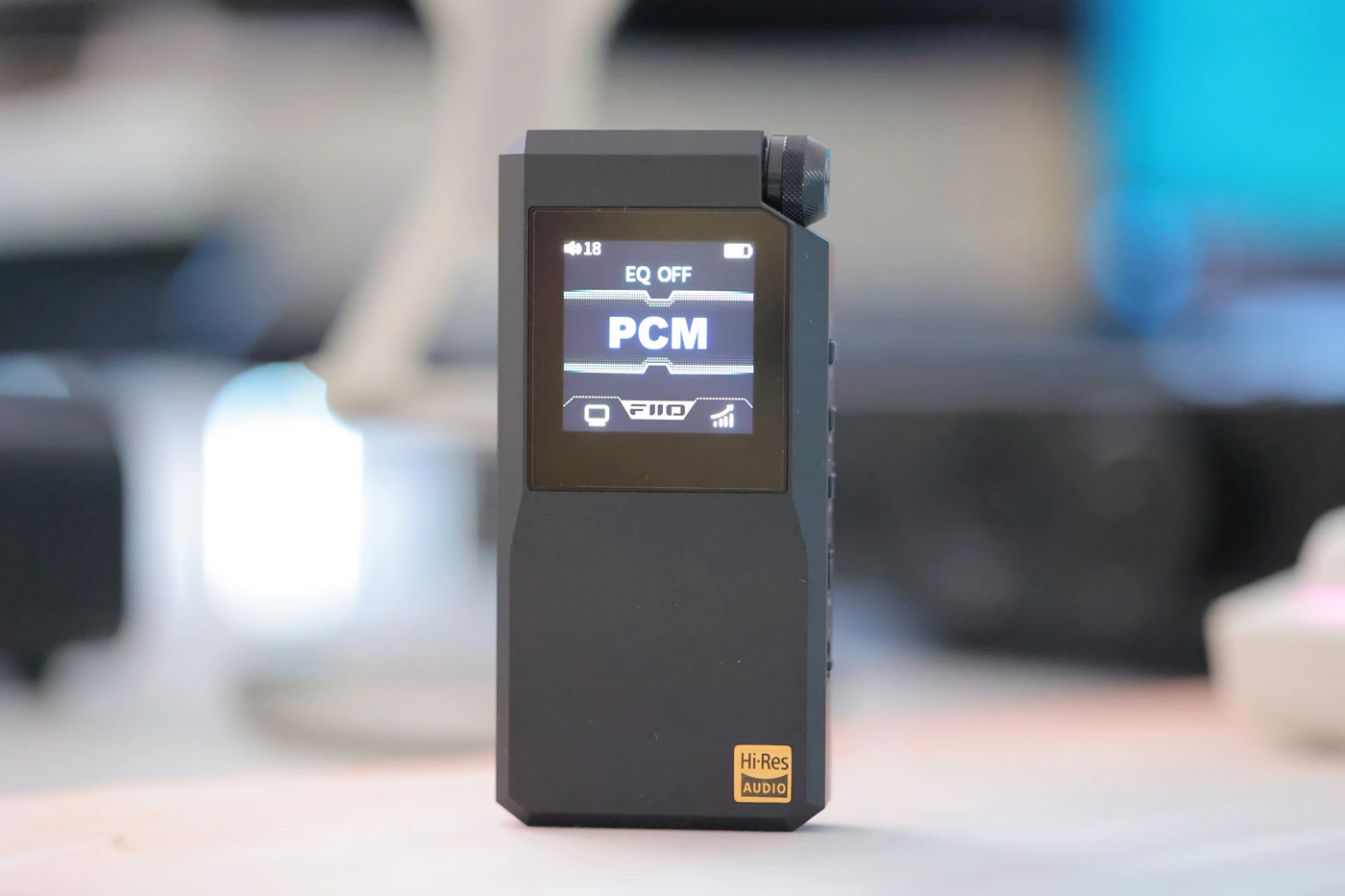
At the end of the day, if you want to listen medium and loud, if you want power, but control, if you need it small and portable, and if you like Bluetooth and need something that can do desktop too, FiiO BTR17 will be happy to oblige, and while it cannot really replace Q15, it replaces FiiO BTR15, and other bluetooth receives with ease, having the sound, ergonomics and build to deliver what I consider to be the best in class performance for a Bluetooth headphone Amplifier.
Product Link
Amazon – https://amzn.to/3E1AS8I
--- Please remember to stay safe, and always have fun while listening to music!---
- If you have a dime to spare, please donate, and help us! It would make the day brighter for me and my wife-
Full Playlist used for this review
We listened to more songs than those named in this playlist, but those are excellent for identifying a sonic signature. I recommend trying most of the songs from this playlist, especially if you’re searching for new music! The playlists are different for Spotify, Tidal and Youtube, and based on the songs I enjoy and are available on each!
https://www.youtube.com/playlist?list=PL_cjBXGmwSHSdGcwuc_bKbBDGHL4QvYBu
https://open.spotify.com/playlist/5J3oloz8Riy9LxEGenOjQ0?si=979ba4f082414be7
https://tidal.com/browse/playlist/330fd544-8e5b-4839-bd35-676b2edbb3d5
--- Contact Us ---






Must be an amazing unit, curious how the sound compares to FIIO’s non-Bluetooth KA17 which I really like (especially with iBasso IT05)
I don’t think I covered FiiO KA17 to tell for sure, but it should be great for all practical purposes 🙂
Use Creative BT-W6 usb-c transmitter for Apt-x Lossless long range transmission dude…
That is a good one, but it is still a very rare standard that is not supported on smartphones. The idea of having something like a dongle attached to my phone to get a wireless device to work to the fullest defeats the purpose of Bluetooth for me, I want aptX Lossless everywhere, at the gym, without putting pressure on the type-C port of the smartphone, as otherwsie I would be using a type-c connection even with BTR17, and that is lossless.